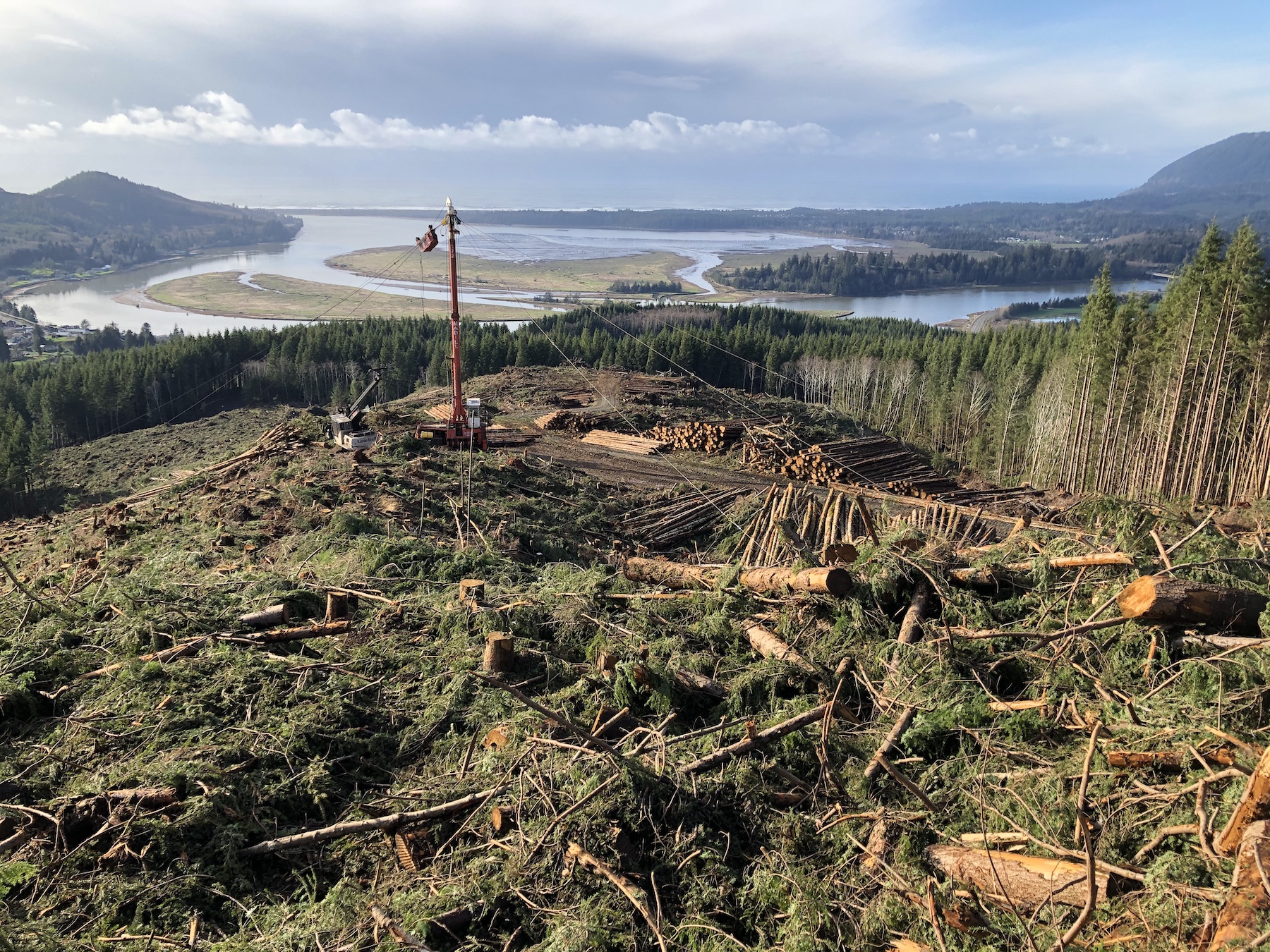The Council of Forest Trust Land Counties is exploring the possibility of offering an alternative to the Oregon Department of Forestry’s Habitat Conservation Plan
Salem, Ore. (April 2, 2021) – The Council of Forest Trust Land Counties (CFTLC) announced its intention to explore an alternative approach to protecting threatened species on state forest trust land. The approach would provide a counter plan to the Oregon Department of Forestry’s (ODF) proposed Habitat Conservation Plan (HCP), one the counties believe will lead to better outcomes for the species and for the counties that benefit from the social and economic benefits of timber harvests.
“The state has an obligation to manage county trust lands to meet environmental, economic, and social outcomes. The draft HCP put forth by ODF fails to meet those outcomes,” said David Yamamoto, Tillamook County Commissioner and CFTLC Chair. “While the CFTLC counties are not opposed to the state’s pursuit of an HCP, we are discouraged by the narrow and exclusive manner in which it was developed and expect ODF and the federal services to consider all viable alternative proposals going forward. We believe there are better ways to protect threatened species that will also allow for more harvest and revenue for local communities.”
With the intention of improving conservation and economic outcomes on state forestlands, ODF developed a 70-year HCP with the United States Department of Fish and Wildlife Service and the National Oceanic and Atmospheric Administration (NOAA). The process took place with little stakeholder input. When the draft plan was released in 2020, ODF announced it would focus on creating new habitat for threatened species, setting aside upwards of 60 percent of state forestland, and reducing harvests 25-30 percent from current levels. The federal agencies will spend the next 18 months reviewing the proposal and assessing potential environmental and social impacts, a process wherein the public is encouraged to submit comments and alternative analyses.
CFTLC is comprised of counties that have a contractual relationship with the State of Oregon relating to management of state forestland. The State manages the land on behalf of the counties and distributes 64 percent of harvest revenues to the counties for schools, roads, law enforcement, and other public services. Despite this relationship, the counties were largely excluded from providing input for the HCP process, county concerns centered around the need for greater consideration of the socio-economic impacts that productive forests provide. .
“Under the proposed HCP, ODF follows the same model applied to our federal forests in the 1990s under the Northwest Forest Plan that was supposed to protect the northern spotted owl by reducing harvests and creating more habitat,” said John Sweet, Coos County Commissioner and CFTLC Vice Chair. “Decades later, spotted owl populations continue to decline while rural communities have been devastated by lack of economic opportunity and severe wildfire. We need to use lessons from the past to create more manageable plans. As evidenced by the Northwest Forest Plan, setting aside millions of acres without managing direct threats to the species does little to nothing to protect the species. CFTLC is looking to blend productive forest management and conservation creating a win-win.”
Under the alternative the counties are considering, stronger protections for northern spotted owls and marbled murrelets would be achieved by directly managing the threats they face from the invasive barred owl, corvids, and jays. The plan would also emphasize developing nesting platforms and focus on population numbers rather than total acres. The proposal, being developed by Mason, Bruce, and Girard, will do more to protect species without setting aside as many habitat acres of forest trust lands.
“Our biologists have decades of experience studying and understanding critical species in the Pacific Northwest,” said Mark Rasmussen, principal at Mason, Bruce, and Girard. “Our preliminary results show that setting aside acres without actively managing the threats against the species will not be enough to ensure survival. We look forward to working with the services to further analyze this proposal.”
“ODF’s model assumes if you simply create habitat, the species will return. This has proven again and again to be costly and ineffective at addressing the complex environmental problems that plague salmon, spotted owl, and marbled murrelet,” said Yamamoto. “As social and economic losses associated with these conservation measures will be borne entirely by the rural communities that surround these forests, the State owes it to them to consider alternative options and all the tools at their disposal. We believe our alternative will provide a path forward that will lead to better conservation outcomes without devastating one of the few remaining sources of revenue and good, year-round employment in our communities.”
On March 8, 2021, NOAA Fisheries filed a Notice of Intent in the Federal Register to prepare an environmental impact statement (EIS) for ODF’s HCP. The alternative proposal is expected to be presented to the CFTLC and then submitted into the scoping process before the comment period ends on April 7, 2021. The Board of Forestry will ultimately decide whether to adopt the HCP as is or entertain amendments and alternatives. CFTLC hopes the county alternative will receive the consideration it deserves.
About Oregon Forest Trust Lands
Since the 1930s, the Oregon Board of Forestry has acquired forestland to be managed as state forests with revenue from timber harvest returned to the counties that conveyed the land and the special taxing districts that serve those communities. Counties that receive revenue under the legal framework established by the state include Benton, Clackamas, Clatsop, Columbia, Coos, Douglas, Josephine, Klamath, Lane, Lincoln, Linn, Marion, Polk, Tillamook, and Washington.


